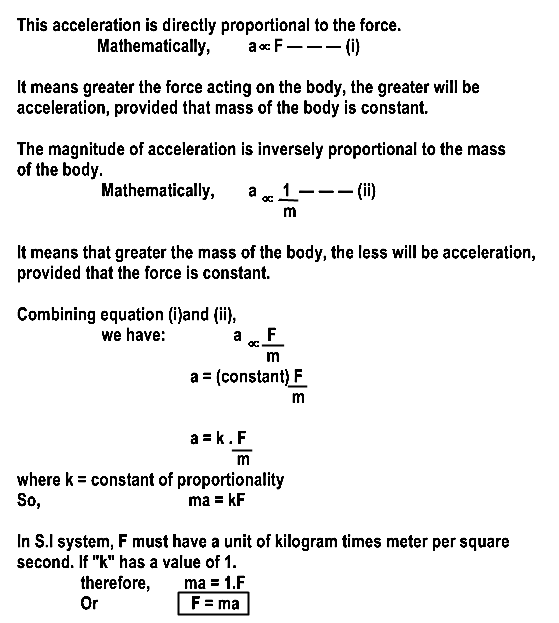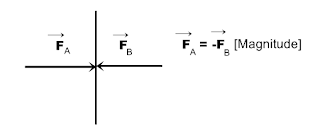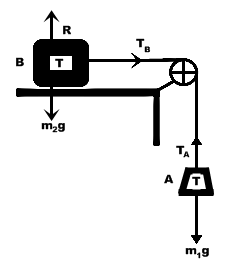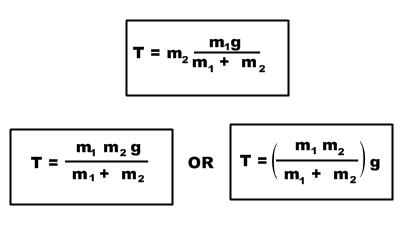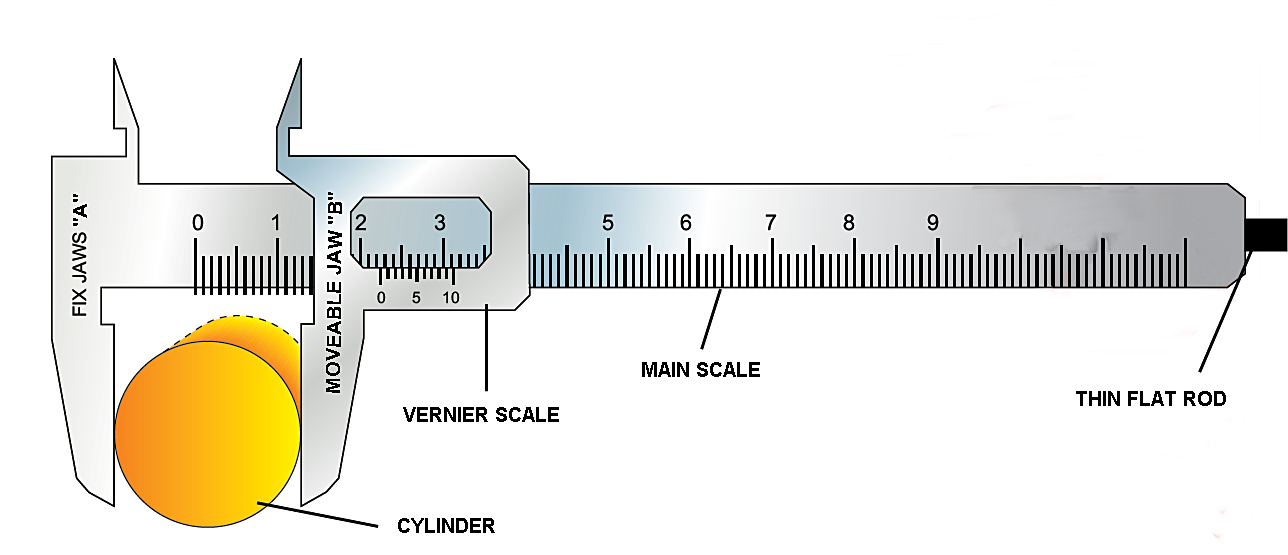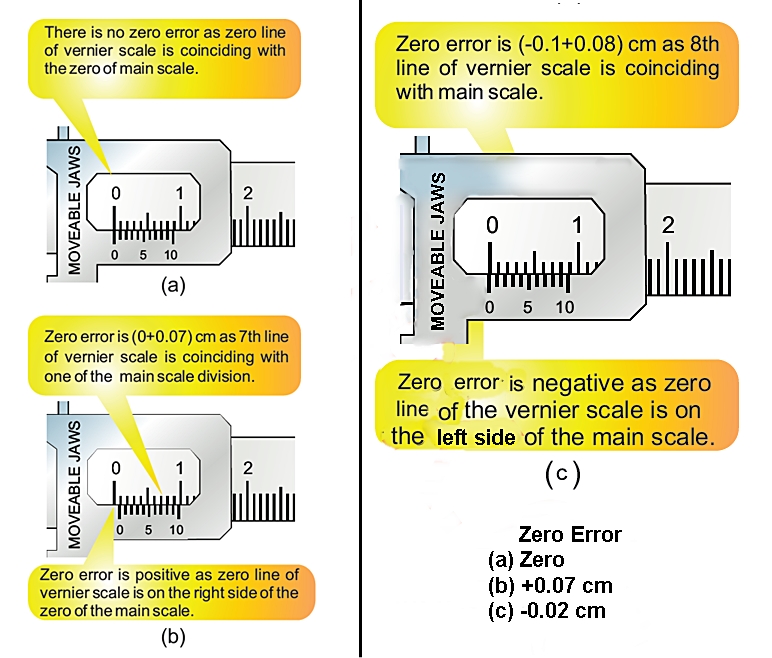Go To Index
MOTIONS AND FORCE
IMPORTANT QUESTIONS OF PAST PAPERS
1) State Newton’s law of motion. (2017)
2) Difference between Mass and Weight. (2009, 2013, 2015, 2018 )
3) Define law of conversation of momentum. ( 2012, 2009)
4) Define limiting friction and law of inertia. ( 2011)
5) Write down three method of reducing friction. (2008, 2010)
6) Define second law of motion and prove F=ma. (2011, 2013, 2018)
7) Write advantages and disadvantages of friction. (2016)
8) Tension in a string
IMPORTANT SYMBOLS:
• Mass= m
• Force= F
• Momentum= P
• Tension= T
• Velocity= V
• Coefficient of friction= µ
• Distance= S
• Normal reaction= R
• Weight= W
• Gravity= g
IMPORTANT FORMULA’S:
i. F =ma
ii. Vf = Vi + at
iii. 2as = Vf2 - Vi2
iv. S= Vit + 1/2 at2
v. W=mg
vi. P= mV
vii. m1U1 + m2U2 = m1V1 + m2V
viii.

ix.

x. F= µR
Questions/ Answer
Q.1)Define motion and force with formulas and unit.
Ans:
MOTION: A body is said to be in the state of motion if it changes its position with respect to its surrounding. For example a car is moving on the road.
FORCE: An agent which changes the state or tends to change the state of body is called force. It is denoted by “F”.
Formula: F= ma
Unit: Unit of force is Newton “N”.
Newton: Force acting on a body is said to be of one Newton if it produces an acceleration of 1 m/s in the body of mass 1 kg in the direction of the applied force.
Q.2)States Newton’s Law of motion.
Ans: There are three laws of Newton’s.
NEWTONS FIRST LAW:
“Every object continues its state of rest of uniform motion in a straight line unless it is acted upon by an external force which changes its state of rest or uniform motion”.
NEWTONS SECOND LAW:
“When an external force acts on an object, it produces acceleration in it. The magnitude of acceleration is directly proportional to the applied force”.
NEWTONS THIRD LAW:
“To every action there is an equal but opposite reaction”.
Q.3)Define law of inertia with an example.
Ans:
LAW OF INERTIA:
“Every object resists a change in its state of rest or motion, this property is called inertia.
Therefore first law of motion is also called law of inertia”.
Therefore first law of motion is also called law of inertia”.
Example: If the bus is moving and stops suddenly the passengers will feel jerk in the forward direction. It is also due to inertia.
Q.4) Prove that F=ma.
Ans: When an external force acts on an object, it produces acceleration in it. The magnitude of acceleration is directly proportional to the applied force”.
Mathematically:
Q.5)Write down the difference between Mass and Weight.
Ans:
| S.No. | MASS | WEIGHT |
|---|---|---|
| 1. | The quantity of a matter present in a body is called mass. | The force with which earth attracts the body towards its center is called weight. |
| 2. | Mass has no direction so it is scalar quantity. | Weight always directed downward towards the center of the earth so it is vector quantity. |
| 3. | The mass of a body remain constant | The weight of the body does not remain constant. It is different at different altitude of earth g ∝ 1 / rg2. g = acceleration due to gravity. rg = Radius of earth |
| 4. | Its SI unit is kilogram (Kg). | Its SI unit is Newton (N). |
| 5. | Mass is the measure of inertia. | It is the measurement of gravitational force between the earth and the body. |
| 6. | Its formula is m = F / a. | Its formula is W = mg. |
| 7. | Mass can be determined by ordinary or physical balance. | Weight can be determined by a spring balance. |
| 8. | Mass remain constant at the surface and at the center of the earth | Weight of a body becomes zero at the center of the earth. |
| 9 | It is a universal constant. | It depends upon the height. |
Q.6)Define tension.
Ans:TENSION:
"The weight of the body acts downward and a reaction force acts on the string in upward direction. This reaction (upward) force is called tension." OR "Tension is a force which is directly exerted by a string on a body to which it is attached." It is denoted by T.
Nature: It is a type of force so it is also a vector quantity.
Unit: Its S.I. unit is Newton (N).
Q.7)Define Momentum. Write down its formula and unit.
Ans:MOMENTUM: The quantity of motion contained in a body is called momentum. It is denoted by P.
Nature: it is a vector quantity. Its direction is same as that of velocity.
Formula: P = mV
Unit: The SI unit is kilogram per second (Kg-m/s-1)
Q.8)Describe law of conservation of Momentum.
Ans:
LAW OF CONSERVATION OF MOMENTUM:
“The total momentum of an isolated system always remain constant.”
Mathematically Expression:
We consider a system of two non-rotating colliding balls. A and B having masses m1 and m2 and moving with velocities U1 and U2 respectively along a straight line in the same directions,
According to law of conservation of momentum,
Total momentum of the system before collision,
=m1u1+ m2u2 ………. (1)
Total momentum of the system after collision,
=m1v1 + m2v2………. (2)
According to law of conservation of momentum,
Total Momentum of the System Before Collision = Total Momentum of the System After Collision,
m1u1 + m2u2 = m1v1 + m2v2
Q.9)Define friction. Express force of friction mathematically.
Ans:FRICTION: “The opposing force, which acts in the opposite direction of the movement of the upper body, is called force of friction, or simply is called Friction.
EXPRESSION FORCE OF FRICTION MATHEMATICALLY:
Let us consider force on the wooden block placed on the table. There are two forces acting on it. One is the weight “W” of the block acting downward and other is normal reaction “R” of the table acting upward. In normal reaction that is fore of friction F is directly proportional to normal reaction R.
F α R
F=µR
F=µR
Q. 10)Write down the types of friction.
Ans: There are four types of friction.
i.Static Friction: The force of friction between two bodies when they are in the state or rest is called static friction. It is denoted by Fs.
ii.Kinetic Friction: The force of friction which acts on a body when it is in state of motion is called kinetic friction. It is denoted by Fk.
iii.Rolling Friction: When a body rolls over a surface, the force of friction is call rolling friction.
iv.Sliding Friction: When a body is sliding over a surface, the friction of force which exists during the motion is called rolling friction.
Q. 11)Define the term limiting friction and self-adjust friction.
Ans:
LIMITING FRICTION:
The maximum value of the resisting force between the two surface before motion start is called limiting friction.
SELF-ADJUSTING FRICTION:
The force of friction has ability to increase its value with the increase of applied force till it reaches a maximum value is called self-adjusting friction.
Q. 12)Write down the advantages and disadvantages of friction.
Ans: ADVANTAGES OF FRICTION:
i. It produces heat.
ii. It enables us to walk on the ground.
iii. It produces grip on joints.
iv. It makes the object stable at its position.
DISADVANTAGES OF FRICTION:
i. Due to friction, surface destroys.
ii. It leads to wear and tear on moving parts of machines.
iii. Excess friction raises the temperature and heat produce.
iv. Excess friction makes difficult to move object.
Q. 13)Write down three method of reducing friction.
Ans: METHOD OF REDUCING FRICTION:
i. Various parts of machines which are moving over one another are properly lubricated.
ii. Reduce the force acting on the surface.
iii. A thick layer of oil is used between sliding surfaces to reduce friction.
Notes By Practical Center
Q.l: Define force. Write down its formula and units. Also write down the factors on which force depends?
Ans: FORCE:
"Force is that external agent which produces motion or tends to produce motion or stop motion or tends to stop motion."
OR
"Force may also define as it is that external agent which changes or tends to change a body's state of rest or of uniform motion in a straight line. It can also distort or tends to distort the shape of a body to which it is applied."
OR
"The rate of change in momentum of a body is called force."It is denoted by F. It is a vector quantity.
Formula:
F = ma
Where
F stand for force
m stand for mass and
a stand for acceleration
Unit:
In S.I. system, the unit of force is Newton (N).
Newton:
It can be defined as,
"Force acting on a body is said to be of one Newton if it produces an acceleration of 1 m/s in the body of mass 1 kg in the direction of the applied force."
Factor On Which Force Depends:
There are two factors on which force depends:
- Force is directly proportional to the mass of the body.
- It is directly proportional to acceleration produced in the body.
Q.2: State and explain the following laws? and Give any two examples of each law
- Newton's first law of motion
- Law of inertia
- Newton's second law of motion
- Newton's third law of motion
Ans: NEWTON'S FIRST LAW OF MOTION:
Statement:
"Every object continues its state of rest or of uniform motion in a straight tine unless it is acted upon by an external force which changes its state of rest or of uniform motion."
Explanation:
This law consists of two parts i.e.,
- "If a body is at rest, it will remain at rest until it is acted upon by an external force".
For Example:
A book lying on a table or table lying in a room will not change its position until an external force act on it. - "If a body is in uniform motion in a straight line, it will continue in this state until it is acted upon by an external force.
For Example:
When we roll a ball on surface, it will come to rest due to friction and air resistance. If these forces do not oppose the motion of the ball, it will continue its uniform motion.
Important concepts:
From the above discussion, we reach the following two very important concepts.
1. The definition of force i.e. it is force which can change the position of the object or it is force which can stop a moving ball.
2. The inertia of a body.
LAW OF INERTIA:
Statement:
All material objects possess the property of opposing any change in the state of rest or of uniform motion in a straight line. So we conclude that if there is no external force acting on a body, it will be in inertial state. Thus it stats that
"The first law of motion is also called the law of inertia.
Inertia is the property of a body due to which it resists against any
change in its state of rest or of uniform motion in a straight line."
Inertia is the property of a body due to which it resists against any
change in its state of rest or of uniform motion in a straight line."
-
Example No.1:
A small coin is put on a card and placed a card over the mouth of a glass. If the card is flicked away with the finger horizontally, the coin drops neatly into the glass due to inertia. - Example No.2:
Suppose passengers are sitting in a bus. If it starts moving suddenly, the passengers will feel a jerk in the backward direction, it is because their bodies are in contact with the seat of the bus and come in motion with the motion of the bus while the upper parts of their bodies remain at rest due to inertia and so the passengers feel a jerk in the backward direction.
Similarly, if the bus is moving and stops suddenly the passengers will feel a jerk in the forward direction, it is also due to the inertia. - Example No.3:
A block of stone, which is large, can hardly be pushed along the ground, while a small wooden block cab easily be pushed along the ground. The mass of the stone or wooden block is the measure of inertia. - Example No.4:
If a person, riding a bicycle along a leveled road stops pedaling, he does not come to rest immediately. The bicycle continues to move forward due to inertia.
NEWTON'S SECOND LAW OF MOTION:
Statement:
"When a force acts on an object, it produces an acceleration in its own direction which is directly proportional to the magnitude of the applied force and inversely proportional to the mass of the object."
OR
"The acceleration of a body is directly proportional to the force acting on it and inversely proportional to the mass of the body." Derivation Of F= ma:
Consider an object of mass 'm', placed on a friction less surface. According to the given statement, when a force is applied on an object, it produces acceleration in the direction of force and it is observed that.
Unit Of Force:
The unit of force is as follows:
F = ma
F = kg. m/s2
F = N
So, in the S.I. system, the unit of force is kg m/s2 which is represented by Newton (N).
Newton:
One Newton force is defined as,
"One Newton is that amount of force produces an acceleration of one meter per second square in a mass of 1 kilogram."
1N = 1kg. 1m/s2
Explanation:
Consider a body of mass "m" placed on a friction less surface, Let force "F" produces acceleration "a" in the body. So, it is observed that if we increase the applied force "F" on the body, its velocity will increase or its acceleration "a" will also increase.
So, we conclude that,
a ∝ F if the mass of the body is constant.
On the other hand, if we consider two bodies (balls), one is of iron and other is of plastic and we apply force on both of them, then we observe that the plastic ball will accelerate more than the iron ball.m1 = Mass of Plastic ball.
m2 = Mass of Iron ball.
a1 = Acceleration of plastic ball.
a2 = Acceleration of Iron ball.
F = Constant force
Thus, we conclude that,
a ∝ 1 / m If a constant force is acting on it.
The above observation can be summarized in the form a law called Newton's Second Law of Motion.NEWTON'S THIRD LAW Of MOTION:
Statement:
"To every action there is an equal but opposite reaction."
Action and reaction do not act on the same body but act on two different bodies.
Explanation:
- Action: It is the force, which is applied by the first body on the other.
- Reaction: It is also a force, which is applied by the second body on the first body.
- Equal: The magnitude of Action (force) and Reaction (force) are the same or equal.
- Opposite: The direction of Action (force) and Reaction (force) are opposite.
Example No.1:
While walking on the ground, we push the ground in the backward direction with our feet. This is our action on the ground. As a result, the ground pushes us with a force in the forward direction. This is the reaction of the ground due to which we move forward.
Example No.2:
In the engine of a rocket or plane, gases formed due to the combustion of fuel, rush out with great force through through jet on the back side of the rocket and as a reaction, the rocket or plane moves in the opposite (upward) direction.
Example No.3:
A book lying on table is an example of the third law of motion. Because the weight of the book is acting downward while the reaction of the surface is acting upwards.
Q.3: Define mass and weight?
Ans: MASS:
Mass is the quantity of matter possessed by a body. It is denoted by m. Its S.I. unit is kilogram (kg). It is a scalar quantity. It can be find out by the following formulas:
m = F / a
m = W / g
Weight is the force with which the earth attracts a body towards its center. It is denoted by W. Its S.I. unit is Newton (N). It is a vector quantity. It can find out by using the formula
W=mg
Q.4: Find the equations for acceleration and tension in the string when two bodies having different masses m1 and m2 connected by a string passes over a friction less pulley in such a way that
(i) The two bodies hang vertically.
(ii) One body moves vertically and the other moves horizontally.
Ans: TENSION IN A STRING:
The force applied on a body through a string is called "Tension". When a body of weight "W" is kept suspected by a string, the weight of the body pulls the string downwards while the string pulls the body upwards with an equal force. This force is called Tension in the String "T".
- If the body is at rest or moves with uniform velocity thenT = W
- If the body accelerates upward, then,T > W
- If the body accelerates downwards, then,W > T
MOTION OF BODIES CONNECTED BY A STRING:
Case-1: When Both The Bodies Moves Vertically
Consider two bodies A and B having unequal masses m1 and m2 respectively connected by a string passes over a friction less pulley in such a way that the two bodies hang vertically.Suppose m1 is greater than m2. Then the body "A" will move down with acceleration a. While body "B" will move up with the same acceleration. Let T be the tension in the string.
To calculate the acceleration of the bodies and tension in the string, Let us consider the motion of the body A first.
Downward motion of the body A:
Two forces are acting on the body A:
- Force of gravity (or weight of the body), W1 = mg, acting in the downward direction.
- Tension T in the string acting in upward direction.
m1 g > T
Resultant (Net) force acting on the body A = Downward Force -Upward ForceF1 = m1 g-T
But we know that, according to Newton's 2nd law of motion,F1 = m1 a
Therefore, m1 a = m1 g - T ..........(i)
Upward Motion Of The Body B:
Here also, two forces are also acting on the body B:
- Force of gravity (or weight of the body), W2 = m2g, acting in the downward direction.
- Tension T in the string acting in upward direction.
Since the body B is moving upward, then:
T > m2g
Resultant (Net) force acting on the body B = Upward Force - downward ForceF2 = T - m2 g
But, according to Newton's 2nd law of motion,F2 = m2 a
Therefore,m2a = T - m2 g ........(ii)
EXPRESSION FOR ACCELERATION:
To Find The Expression For Acceleration:
Adding equation (i) and (ii), we get:
m1 a = m1 g - T ..........(i)
m2a = T - m2 g ...........(ii)
m1 a + m2a = m1 g - T + T - m2 g
m1 a + m2a = m1 g - m2 g
a(m1 + m2) = g(m1 - m2)
EXPRESSION FOR TENSION:
To find the expression for tension T:
Dividing equation (i) by equation (ii), we get:
m1 (T - m2 g) = (m1g - T)m2
m1 T - m1 m2 g = m1 m2 g - m2 T
m1 T + m2 T = m1 m2 g + m1 m2 g
T (m1 + m2) = 2 m1 m2 g
Case - 2: When one body moves vertically and the other moves on smooth horizontal surface
Consider two bodies A and B having unequal masses m1and m2 respectively attached to the ends of a string which passes over a friction less pulley.Suppose m1 is greater than m2. Hence, body A will move vertically down with acceleration a. While body B will moves on a smooth horizontal surface towards the pulley with the same acceleration. Let the tension in the string be 'T'.
To calculate the acceleration of the bodies and tension in the string, let us consider the the body A first.
Downward Motion Of The Body A:
If two forces are acting on the body A:
- Force of gravity (for weight of the body), W1 = m1g, acting in the downward direction.
- Tension T in the string acting in upward direction.
m1g > T
Resultant (Net) force acting on the body A = Downward Force - Upward Force FF1 = m1g - T (act Force)
According to Newtons 2nd law of motion,F1 = m1a
Therefore,m1a = m1g - T ....... (i)
Horizontal Motion Of The Body B:
Three forces are acting on the body B:
- Force of gravity (or weight of the body) W2 = m2g, acting in the downward direction.
- Tension T in the string which is acting horizontally towards the pulley, and
- The normal reaction R of the surface on the body which acts vertically upward.
R = m2g
Hence they cancel each other. Thus, the only force acting on the body B is the tension 'T' which is pulling the body towards the pulley.F2 = T
Since the body is moving with acceleration"a".According to Newton's 2nd law of motion
F2 = m2a
Therefore,m2a = T ....... (ii)
EXPRESSION FOR ACCELERATION:
To Find The Expression For Acceleration A:
Adding equation (i) and (ii), we get:
m1a = m1g - T ....... (i)
m2a = T ........ (ii)
m1a + m2a = m1g -T + T
m1a + m2a = m1g
a ( m1 + m2 ) = m1g
EXPRESSION FOR TENSION:
To Find The Expression For Tension T:
Put the value of a from the above equation in equation (ii), we get:
Q.5: Define Momentum with examples. Write down its formula and unit. On which factors momentum depends?
Ans: MOMENTUM:
"The quantity of motion contained in a body is called momentum. It is denoted by P. It Is a vector quantity."
Example 1:
Consider a truck and a motorcycle moving with the same velocity. When they hit the same vehicle, the truck cause more damage as compared to the motorcycle, because the mass of the truck is greater than the mass of the motorcycle.
Example 2:
If we take a bullet in our hand and hit it into a wall, the bullet will drop after the hit but it will not damage the wall. But if we put a bullet in a gun and fire it towards the wall, the bullet will damage the plaster of the wall, because the velocity of the bullet fired from the gun is much greater than that thrown by hand.
Formula:
Mathematically, momentum can be defined as the product of mass and velocity. If m is the mass of a body moving with velocity v then the momentum P given by:
Momentum = Mass X Velocity
P = mV
Unit:
Therefore the S.I. unit of momentum is kilogram meter per second (kg-m /s) Or Newton second (N-s).
Factors On Which Momentum Depends:
There are two factors or physical quantities on which momentum depends:
(1) Mass: The momentum is directly proportional to the mass of the body. Or Momentum increases with the increase in mass of moving body.
(2) Velocity: It is also directly proportional to the velocity of the body. Or Momentum increases with the increase in velocity of moving body.
Q.6: Give the relation between force and momentum?
Ans: RELATION BETWEEN FORCE AND MOMENTUM:
Consider a mass "m" moving with a velocity "Vi" and let the force "F" change velocity to "Vf" in time "t".
Q.7: Define and explain the law of conservation of momentum?
Ans: LAW OF CONSERVATION OF MOMENTUM:
The law of conservation of momentum states that
"The momentum of an isolated system always remains constant or conserved."
Explanation:
We consider a system of two non-rotating colliding bodies A and B having masses m1 and m2, and moving with velocities U1 and U2 respectively along a straight line in the same direction.
According to the law of conservation of momentum,
Total momentum of the system before collision
= m1U1 + m2U2 --------------- (i)
If U1 > U2, then after time "t", they will collide with each other and their velocities become V1 and V2 respectively .So, the total momentum of the system after collision
= m1V1 + m2V2 --------------- (ii)
At the time of collision, the body of mass "m1" applies a force "FA" on the other body of mass "m2". While on reaction, the body of mass "m2" will also apply a force "FB" in the opposite direction, with the same magnitude.
FA = -FB;
Therefore,
Total momentum of the system before collision = Total momentum of the system after collision
m1U1 + m2U2 = m1V1 + m2V2
Q.8: Write down any two application of law of conservation of momentum?
Ans: APPLICATION OF LAW OF CONSERVATION OF MOMENTUM:
- If a balloon is blown up and released, it flies round the moon. During the flight, air escapes from the balloon in one direction while it moves in the opposite direction. This is due to the law of conservation of momentum of the system.
- The recoil of a gun when a bullet is fired from it is due conservation of momentum of the system.
Q.9: Define isolated system?
Ans: ISOLATED SYSTEM:
An isolates system is a system in which there is no external or opposing force is acting.
Q.10: Define and explain friction? Write down Its expression and on what factors it depends?
Ans: FRICTION:
This is the property by virtue of which a body is sliding on a rough surface, experiences a force in a direction opposite to its motion. This opposing force between two surfaces in contact is known as the force of friction.
OR
It is a force which opposes the motion of a body in continuous contact with the another body.-
Contact Friction:
Contact friction rises when one solid object is sliding over another solid object. -
Fluid Friction:
Fluid friction when a solid body moves through a fluid (gas or liquid).
CAUSE OF FRICTION:
Ordinary surface have projection and depressions. When such surfaces of two bodies are in physical contact, the gross interlocking of projections and depressions takes place which opposes the relative motion.
EXPLANATION:
Consider a wooden block, placed on a horizontal surface and attached to one end of a cord. The other hand of the cord is connected to a spring balance. If we apply force "F" on the block horizontally, we observe that initially, it will not move. If we increase the applied force, then frictional force increases with the increase of applied force. It is so called "self-adjusting force". But if the body is in the verge of motion, then frictional force is maximum and is called limiting friction (f).
In the above case, applied force is equal to the limiting force. If we increase the applied force beyond the limiting force, the block will slide over the surface. In this case the applied force is greater than the friction force.
We can explain the whole procedure by following table and graph:
There are two forces acting on it. One is the weight W of the block acting downwards and the other is reaction of the table R acting upwards. It is observed that the frictional force (limiting) is directly proportional to the normal reaction (R) of the surface which is directly opposite to the weight of the body.
Mathematically we can write,
f ∝ R
f = (constant) R
f = µR
Where "µ" is the constant of proportionality and it is called coefficient of friction.
f / R = µ
OR
µ = f / R
CO-EFFICIENT OF FRICTION:
Coefficient of friction (µ) has no unit because it is the ratio of frictional force and normal reaction. Its value depends upon the nature of the surface in contact but it is independent of the area of surface in contact.
FACTORS ON WHICH FRICTION DEPENDS:
There are two factors on which the force of friction depends:
- It depends upon the nature of the surface.
- It is directly proportional to the normal reaction.
Q.10: Write down the different types of friction?
Ans: STATIC FRICTION:
The opposing force given by the object at rest is called the static friction.
Or
The resistance force between the two surfaces before the motion starts is called the static friction. The maximum value of the static friction is called limiting friction.KINETIC OR DYNAMIC FRICTION:
The opposing force given by the object in motion is called kinetic or dynamic friction. OR The friction during motion is called kinetic or dynamic friction. This friction is slightly less than the limiting friction as well as contact friction.
SLIDING OR CONTACT FRICTION:
When a body is sliding over a surface, the friction force which exist during the motion is called sliding friction.
ROLLING FRICTION:
When a spherical body rolls on a surface, the friction force which exists during the motion is called the rolling friction. OR The opposing force given by rolling object or objects having rollers, like wheel chair, TV trolley and heavy machinery having wheels is called rolling friction. It is much lesser than contact or sliding friction, due to its small contact area and rotation capability.
LIMITING FRICTION:
The maximum value of the resisting force between the two surfaces before the motion starts (static friction) is called as limiting friction.
Q.10: Define self-adjusting Force
Ans: SELF-ADJUSTING FORCE:
The force of friction has the ability to increase its value with the increase of applied force till it reaches a maximum value. Due to this strange nature of frictional force, we call it self-adjusting force.
Q.11: What are the few advantages and disadvantages of friction? How can we reduce friction?
Ans: ADVANTAGES OF FRICTION:
- Without friction between the feet and the ground, it will not be possible to walk on the ground.
- The tyres of motor car and bicycles are made rough to increase friction
- In the absence of friction, the brakes of a motor car cannot work.
- The frictional force between the belt and pulley helps in the rotation of wheel.
- The proper force of friction are maintained between the joints of the body, due to this we can run and do other rapid movements.
- A nail stays in the wood because of friction.
- Nut and bolt can hold a body due to friction.
DISADVANTAGES OF FRICTION:
- A large amount of energy in machines is wasted due to friction.
- Due to friction, heat is produced and causes burning.
- It is commonly observed that when dragged on a surface, experiences a heavy load more friction than the one if experience when dragged by a wheel cart.
- Friction reduces the speed of fast moving vehicle.
- Friction deform the shape of a sliding object.
METHODS OF REDUCING FRICTION:
- There are different methods of reducing friction:
- The various parts of machines which are moving over one another are properly lubricated by air, oils, chalk powder, grease etc.
- In machines, the sliding of various parts is usually replaced by rolling and this is done by using a ball bearing.
- Where sliding is unavoidable, a thick layer of greasing material is used between the sliding surfaces.
- The front of the fast moving objects, e.g. cars, aeroplanes are made oblong to decrease air friction.



